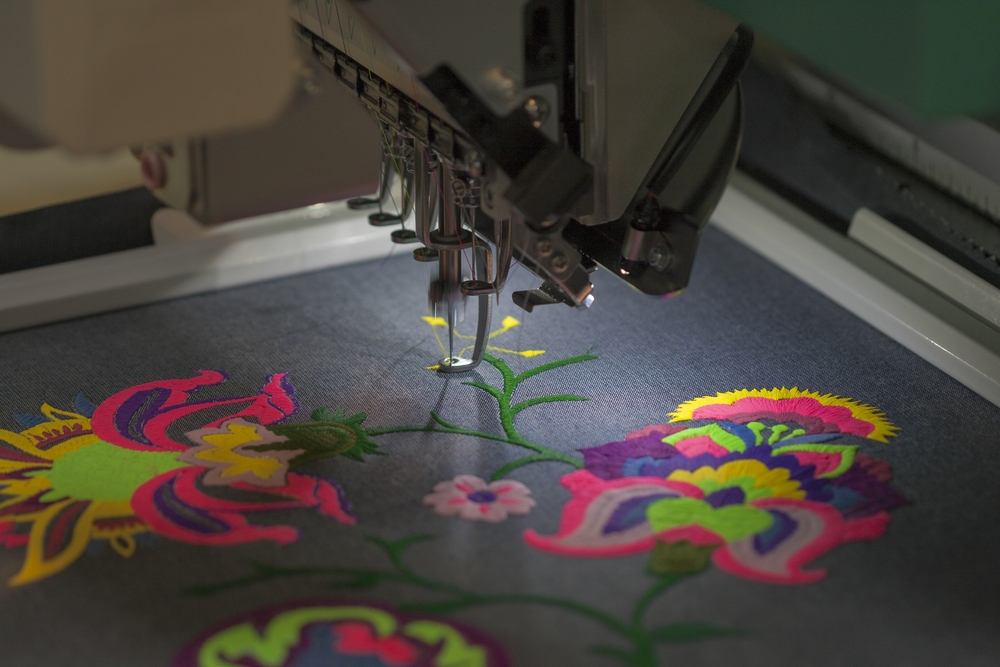Simplifying the Art of Needlework Digitizing: Step-by-Step Overview
Needlework digitizing is a precise craft that requires accuracy and creativity. As technology remains to breakthrough, the digitization process has become more accessible, permitting lovers to bring their elaborate designs to life effortlessly. In this overview, we will unwind the complexities of needlework digitizing, breaking down each action methodically to simplify the process and empower both newbies and experienced embroiderers alike. Remain tuned to discover exactly how you can streamline this detailed art type and change your imaginative visions into magnificently embroidered masterpieces.
Comprehending Needlework Digitizing Software Application
Needlework digitizing software program functions as a crucial tool for transforming intricate designs into digital styles suitable with embroidery makers, helping with specific sewing and customization. This specific software application permits individuals to import different picture data formats, such as JPG or PNG, and transform them right into embroidery machine-readable formats like DST, EXP, or PES - Digitizing for Embroidery. By utilizing functions like stitch editing and enhancing, underlay options, and thread color option, digitizing software application makes it possible for customers to regulate every element of the style process
Furthermore, progressed embroidery digitizing software program supplies tools for creating complex designs, changing stitch thickness, and incorporating elaborate details. Individuals can also preview the design before sewing it out, making sure precision and lessening errors. Furthermore, many software application offer automatic functions that assist streamline the digitizing process, saving time and effort.
Comprehending the capabilities of embroidery digitizing software is important for attaining top quality cause needlework jobs. By grasping this tool, needlework lovers and specialists can unleash their creativity and bring elaborate styles to life with precision and efficiency.

Selecting the Right Style File
After acquainting on your own with the capacities of embroidery digitizing software application, the next important step in the procedure is choosing the ideal layout apply for your project. Digitizing for Embroidery. When picking a layout apply for needlework digitizing, it's vital to take into consideration the complexity of the layout, the size of the end product, and the sort of material you will be dealing with
For complex styles with fine information, a high-resolution picture or vector file is suggested to make certain that the embroidery device can properly recreate the layout. Additionally, the dimension of the end product plays a considerable function in picking the right style data. Bigger styles might need greater resolution documents to keep quality and sharpness.
Additionally, the kind of material you will be stitching on influences the selection of style file. Different textiles might require changes in the design file to make sure that the stitches are correctly aligned and the layout appears as intended. By very carefully choosing the best style data based upon these factors, you can set yourself up for a successful embroidery digitizing process.
Digitizing Devices and Techniques
Utilizing specialized software application and precision techniques, digitizing devices are vital in transforming intricate designs into embroidery-ready documents. Needlework digitizing software, such as Wilcom, Hatch, or Embrilliance, supplies the needed system to convert artwork into stitch data. These programs provide attributes like stitch editing, rug choices, and text devices to make sure the design converts perfectly onto textile.
Among the key techniques in digitizing is creating a clear path for the embroidery equipment to follow. This entails digitizing each component of the layout with accuracy, figuring out stitch kinds, his response densities, and instructions. By utilizing tools like digitizing tablets or software-specific plugins, embroiderers can accomplish a high degree of precision in their digitized layouts.
Moreover, grasping the art of padding sewing is important for creating quality embroidery. Underlay stitching maintains the textile and produces a structure for the style, image source making certain that the end product is both visually appealing and long-lasting. By understanding these digitizing tools and techniques, embroiderers can boost their craft and bring elaborate designs to life with precision and performance.
Personalizing Stitch Types and Directions
The selection of stitch kinds can considerably impact the overall appearance and structure of the embroidered layout. By tactically integrating these stitch kinds, embroiderers can attain deepness and dimension in their designs.
Furthermore, the instructions of stitches plays a crucial role in improving the aesthetic appeal of the last needlework. By experimenting with various stitch angles and patterns, embroiderers can bring their designs to life with impressive information and ins and out.
Testing and Refining Your Digitized Layout
To ensure the accuracy and high quality of your digitized design, comprehensive screening and improvement are vital action in the embroidery digitizing process. When you have completed the digitization of your layout, it is critical to examine it prior to continuing with the actual embroidery. Testing enables you to recognize any kind of potential issues such as string breaks, stitch density problems, or layout distortions that might impact the result.

After testing, it is necessary to improve your digitized style based on the feedback from the examination sew-out. This might involve tweaking sew setups, changing densities, or making changes to the total layout to attain this article the wanted end result. By repeating with screening and refinement, you can adjust your digitized design to excellence before progressing with the actual needlework procedure.
Final Thought
To conclude, understanding the art of needlework digitizing requires an extensive understanding of the software, picking the best design data, utilizing digitizing devices and strategies, personalizing stitch kinds and directions, and screening and fine-tuning the digitized layout. By adhering to these actions, embroiderers can simplify the digitizing procedure and create high-quality stitched layouts with accuracy and efficiency.
Comments on “Premier Digitizing for Embroidery: Perfect Stitch Each Time”